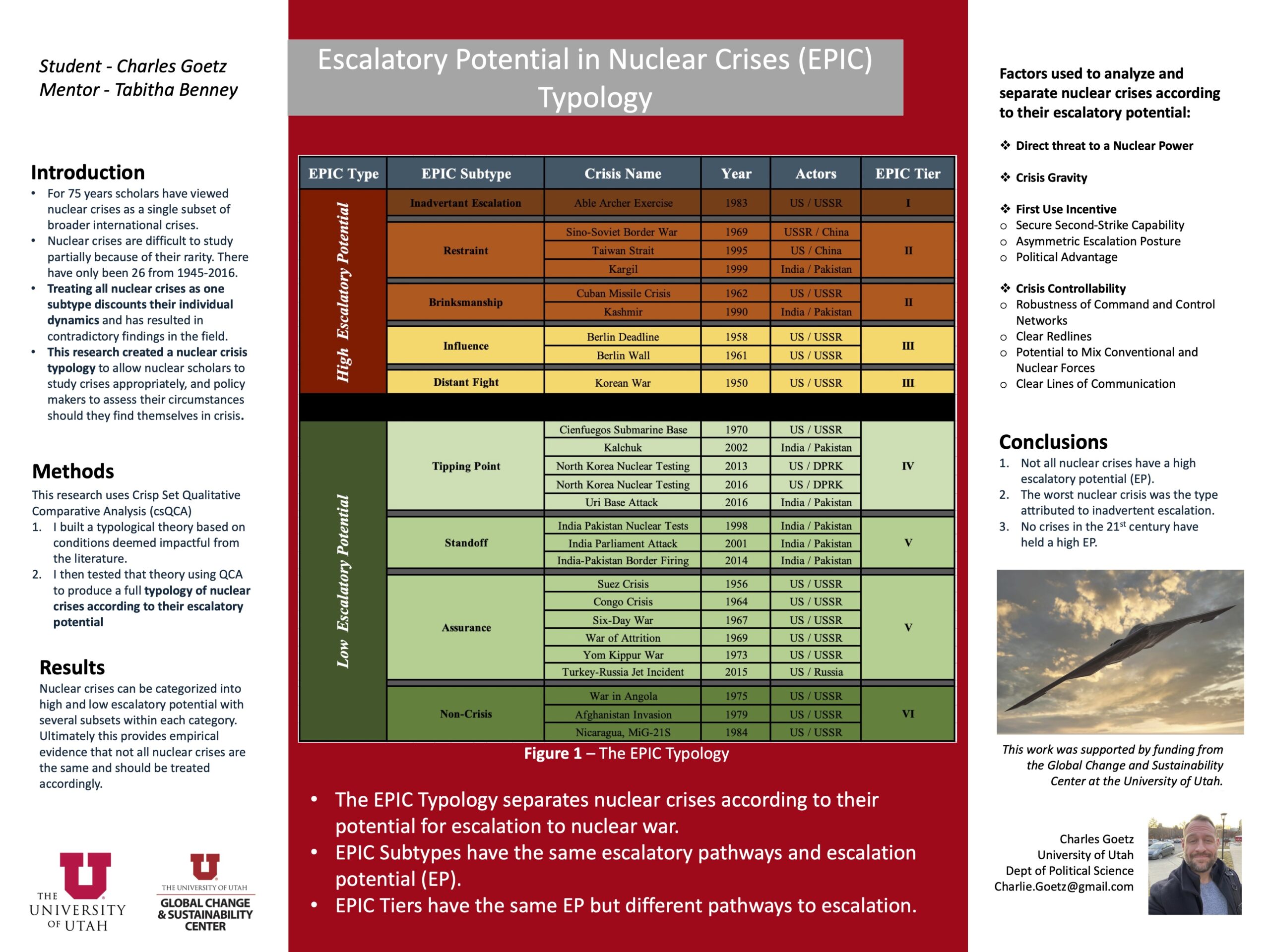The Escalatory Potential in Nuclear Crises (EPIC) Typology
-Charles Goetz
[bs_collapse id=”collapse_bb86-afd7″]
[bs_citem title=”Bio” id=”citem_e610-6c22″ parent=”collapse_bb86-afd7″]
I am a current graduate student at the University of Utah. My Graduate Research is focused on nuclear crises and measuring their potential for escalation. Prior to this assignment I was stationed at Whiteman Air Force Base as a Weapons Instructor where he was responsible for the 509th Operations Group training program and stand up of the Mission Training Center. As a B-2 Evaluator Pilot my responsibilities also included commanding a two-person; $2.4B long-range precision strike aircraft in support of the Global Strike mission prepared to execute both conventional and nuclear operations.
[/bs_citem]
[bs_citem title=”Abstract” id=”citem_eca8-96a7″ parent=”collapse_bb86-afd7″]
The threat from nuclear crises remains an existential concern, but how nuclear crises function remains unsolved. Efforts to study these rare events have led to heterogenous lists of disputes regardless of differentiating factors and this practice has led to contradictory findings. This research seeks to fill this gap by developing a nuclear crisis typology using four criteria. First, cases are classified based on the role of the nuclear-armed states within the crisis. Next, cases are situated by common stakes using the International Crisis Behavior dataset gravity variable (Brecher and Wilkenfeld, 1997). Finally, cases are classified by their incentive to use nuclear weapons first, and the controllability of the crisis. These factors are compiled into a dataset comprising all nuclear crises from 1945-2016 and analyzed using qualitative comparative analysis. The result is a new nuclear crisis typology based on escalatory potential.
[/bs_citem]
[bs_citem title=”Narrative” id=”citem_780c-0f71″ parent=”collapse_bb86-afd7″]
I used several factors from nuclear coercion and deterrence literature to measure nuclear crises potential to escalate to a nuclear exchange. I used a method called qualitative comparative analysis to then compare every possible path to escalation for each crisis. I then separated crises by their potential for escalation and their path to that escalation. The result is a typology of nuclear crises separated by how dangerous they were. Nuclear scholars can use this information to help in their sample selection, and policy makers can use this information to help decide what kind of a situation they may find themselves, which can lead to a better selection of policy choices.[/bs_citem]
[/bs_collapse]

